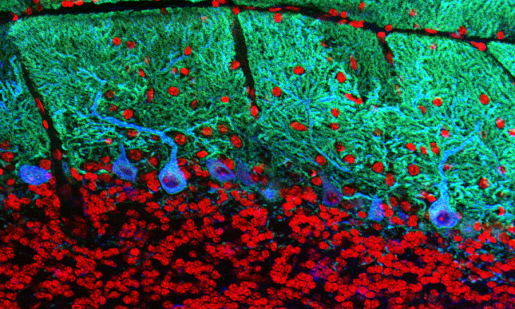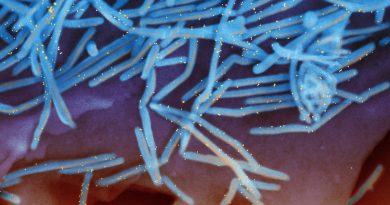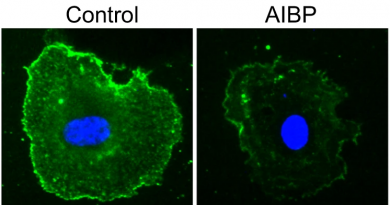Image of the Month: Cerebellar Purkinje cells
Purkinje cells are a type of neuron located in the cerebellar cortex of the brain.


Purkinje cells are involved in the regulation of movement, balance and coordination among other functions. Recent work headed by Amanda Brown, a graduate student in the lab of Dr. Roy Sillitoe, has connected these cells with a condition called tremor — the most common movement disorder.
They discovered that Purkinje cells trigger tremor when their pattern of signaling to other neurons changes from a regular pattern to signaling in bursts. The altered signaling pattern returned to normal and the tremor stopped when the animals were treated with deep-brain stimulation directed at a group of cerebellar neurons that communicates with Purkinje cells. Read all about this work published in eLife, and in From the Labs.
The Sillitoe lab looks to uncover the developmental origins of complex neurological conditions. They work with the cerebellar branch of the motor system as a model for understanding brain development and disease. In addition to its well-known role in controlling motor coordination, motor learning and balance, accumulating evidence suggests that the cerebellum also participates in cognition and emotion. This puts forward the possibility that defects in the cerebellum may contribute to devastating neurological disorders including ataxia, dystonia, autism spectrum disorders and obsessive-compulsive disorder.

Dr. Roy Sillitoe is an associate professor of pathology and immunology and of neuroscience at Baylor College of Medicine and Texas Children’s Hospital.
Sillitoe also is the co-director of the Development, Disease Models and Therapeutics Graduate Program at Baylor.



